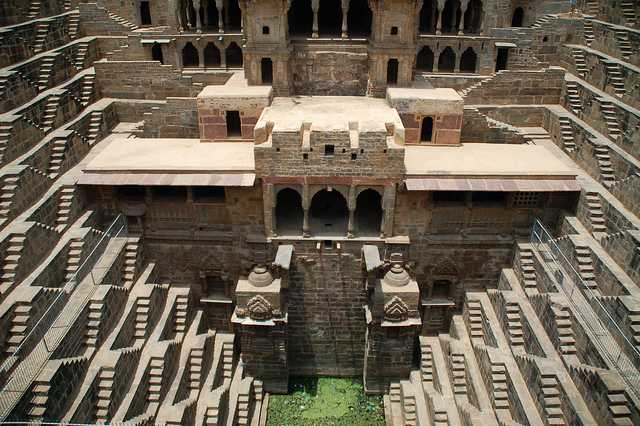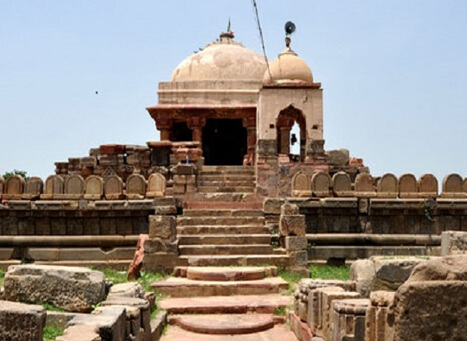Abhaneri is a small village with one of India’s deepest and largest step wells (also known as tank gardens). Step wells are unique to India. They were used as cool places of resort, as pools for ritual cleansing before a temple visit and as a water supply for dry weather. There is a temple adjoining the step well. Step wells had leisure, religious and, of course, functional purposes. They are distinguished predecessors of what are now called low-intensity, or sustainable, urban drainage systems (SUDS) Step wells have many names including: baoli, baudi, bawdi, bawri, baoli, bavadi, bavdi, hauz, vav, vaav, kalyani, pushkarani, barav.

Jaipur city being the hottest tourist destination has numerous magnificent forts, palaces and historical spots to attract visitors from all corners of the world. There are several wonderful places near Jaipur that are truly amazing to witness and explore the art, culture and heritage of colorful state Rajasthan. There are plenty of impressive monuments in small villages near Jaipur that offer lots of excitement and remarkable adventure. Abhaneri, a small village in Dausa district on Jaipur Agra Highway famous for its baori or stepwell, is a place not to be missed.

History :-
Abhaneri is originally named as Abha Nagri that means City of Brightness. It was built by King Raja Chand in 9TH century. It is popular for Chand Baori and Harshat Mata Temple. It is a legend that Goddess Harshat Mata shower brightness all over the village, so it is named Abha Nagri which is probably mispronounced as Abhaneri.

Highlights :-
The major attraction of Abhaneri is the Chand Baori. The massive stepwell built to conserve rainwater is 20 m deep with 13 levels, is considered deepest and largest stepwell in India. Marvelous carvings on the steps make it to be an excellent piece of architecture. The stepwell stands as an amazing display of ancient engineering. The geometric step pattern gives fascinating and surprising experience to the tourists.
Another interesting site to visit is Harshat Mata Temple dedicated to Goddess Harshat Mata, the Goddess of Joy. The temple built in 10th century and is situated near the Chand Baori, reflects an incredible architectural aspects of ancient India. Abhaneri also known for its local dances like Ghoomer and Kalbelia is remarkable site worth visiting at least once.
